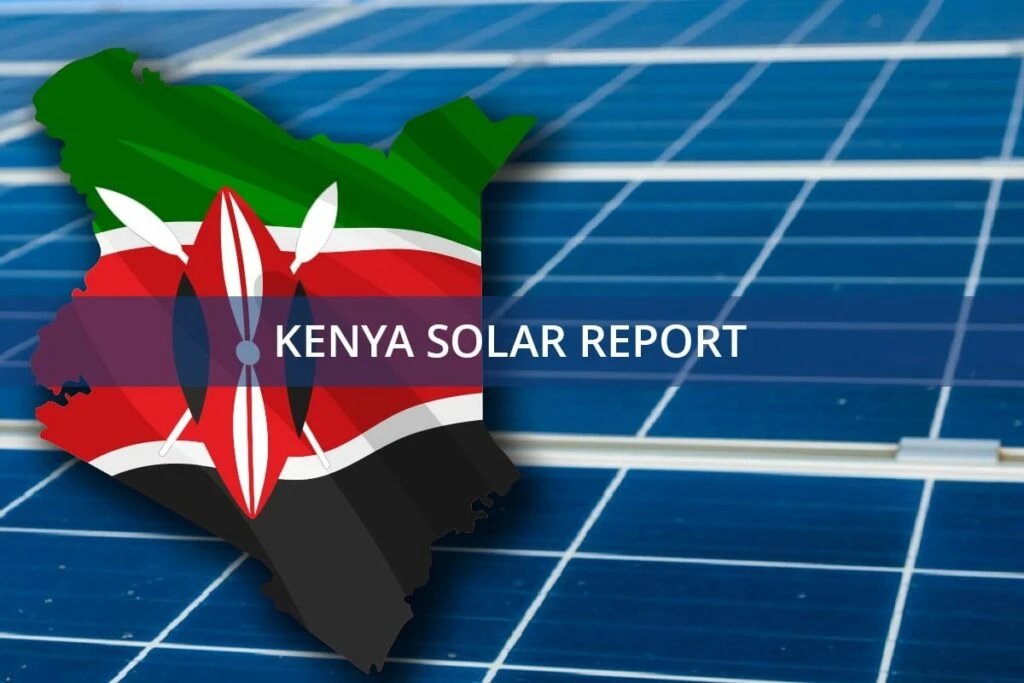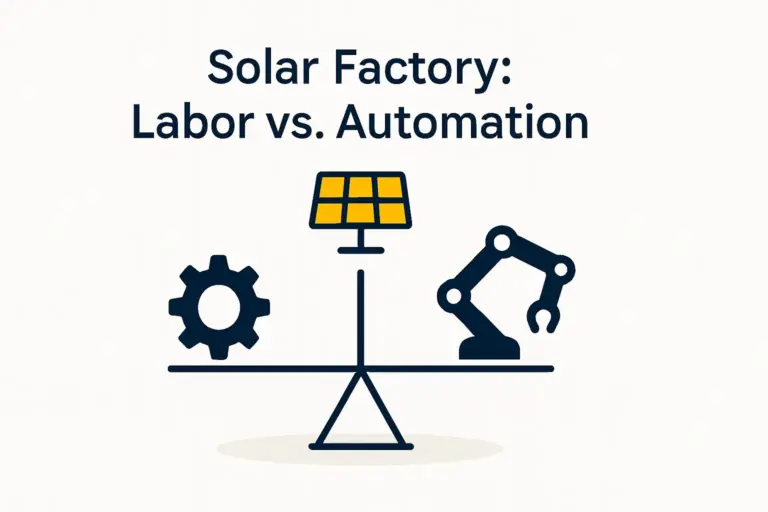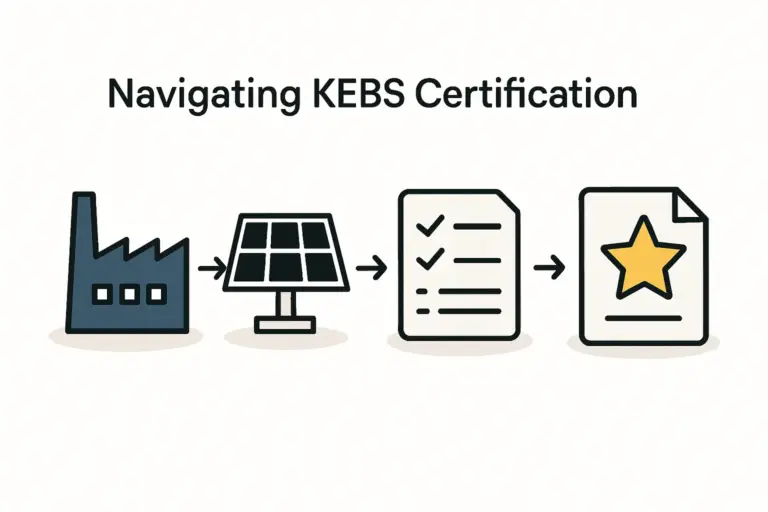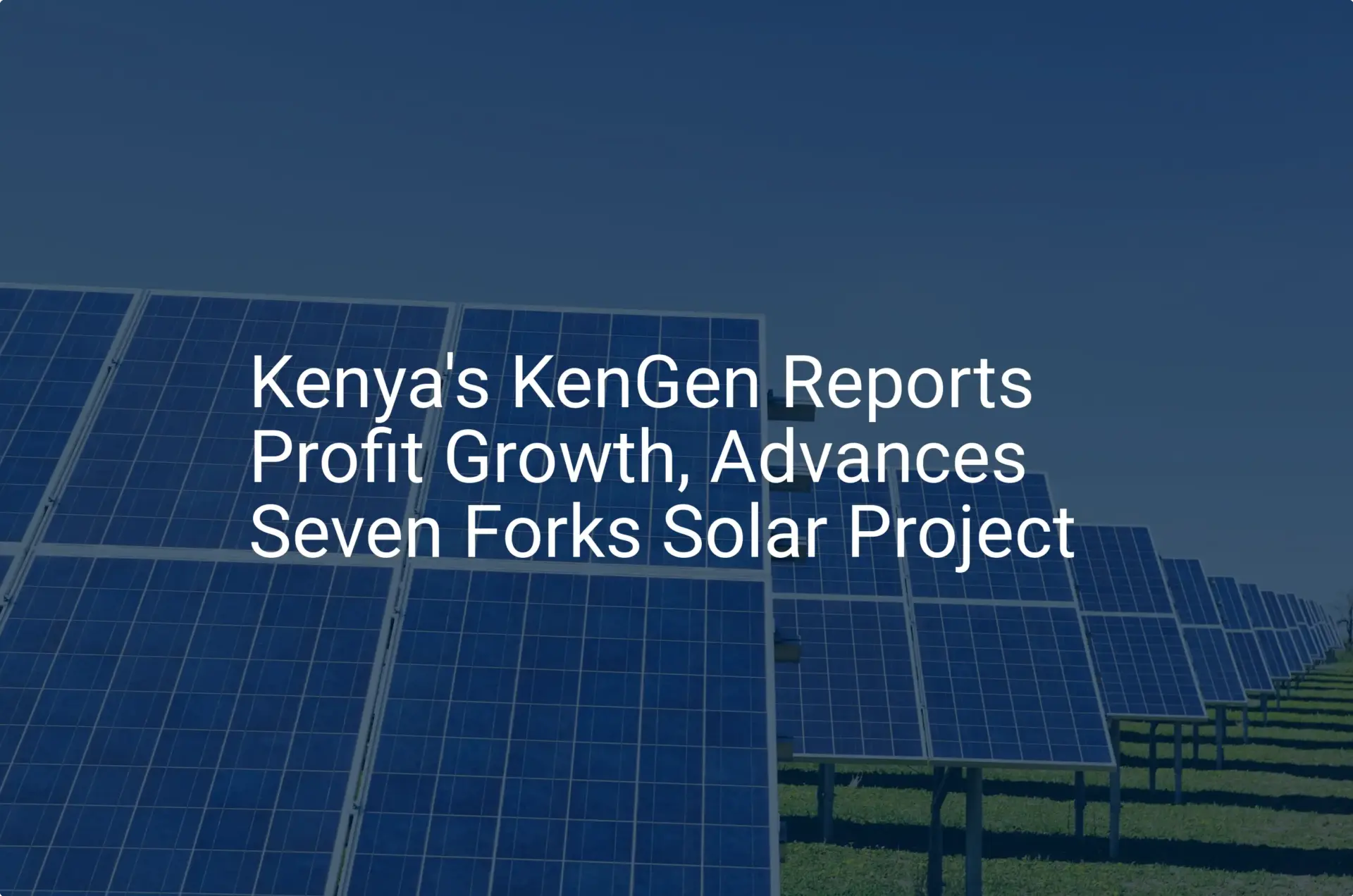An entrepreneur’s business plan for a new solar module factory can appear flawless on paper. The market demand is clear, production technology is selected, and financial projections are promising.
However, a critical variable often underestimated is the practical challenge of moving raw materials from a global supplier to the factory floor. A single container of high-value solar cells delayed at the Port of Mombasa by an administrative error can trigger unforeseen costs and disrupt production schedules, turning a sound plan into a logistical headache.
This article breaks down the import process for critical solar panel components in Kenya, focusing on the customs procedures, tariffs, and logistical considerations that every prospective solar manufacturer must understand. By navigating these complexities effectively, an enterprise can build a resilient supply chain—the true foundation of a successful manufacturing operation.
Understanding the Core Imported Materials
While the goal is local manufacturing, the journey of a solar panel in Kenya begins with globally sourced, high-precision components. Value is added locally during assembly, but the primary building blocks are almost always imported. This is a necessity driven by the highly specialized and capital-intensive nature of their production.
The most critical raw materials for solar panels that a new facility will need to import include:
Photovoltaic (Solar) Cells
The heart of the solar module, these components convert sunlight into electricity. Sourcing high-efficiency, reliable solar cell technology is paramount for producing a competitive final product.
EVA (Ethylene Vinyl Acetate) Encapsulant
These polymer sheets are used to laminate the solar cells, protecting them from moisture, impact, and vibration while ensuring maximum light transmission.
Backsheet
The module’s rearmost layer, providing mechanical protection and electrical insulation.
Junction Box
This small, weatherproof enclosure on the back of the panel houses the bypass diodes and serves as the connection point for the output cables.
Other essential components, such as tempered glass and aluminum frames, may also be imported, although opportunities for local or regional sourcing for these items are growing.
Ready to make big Profits?
The solar Industry is Booming
WE HELP NEWCOMERS to the solar industry start their own solar module production line. Customers can make BIG PROFITS by selling modules and finding investors, without wasting money and time on things they don't need!
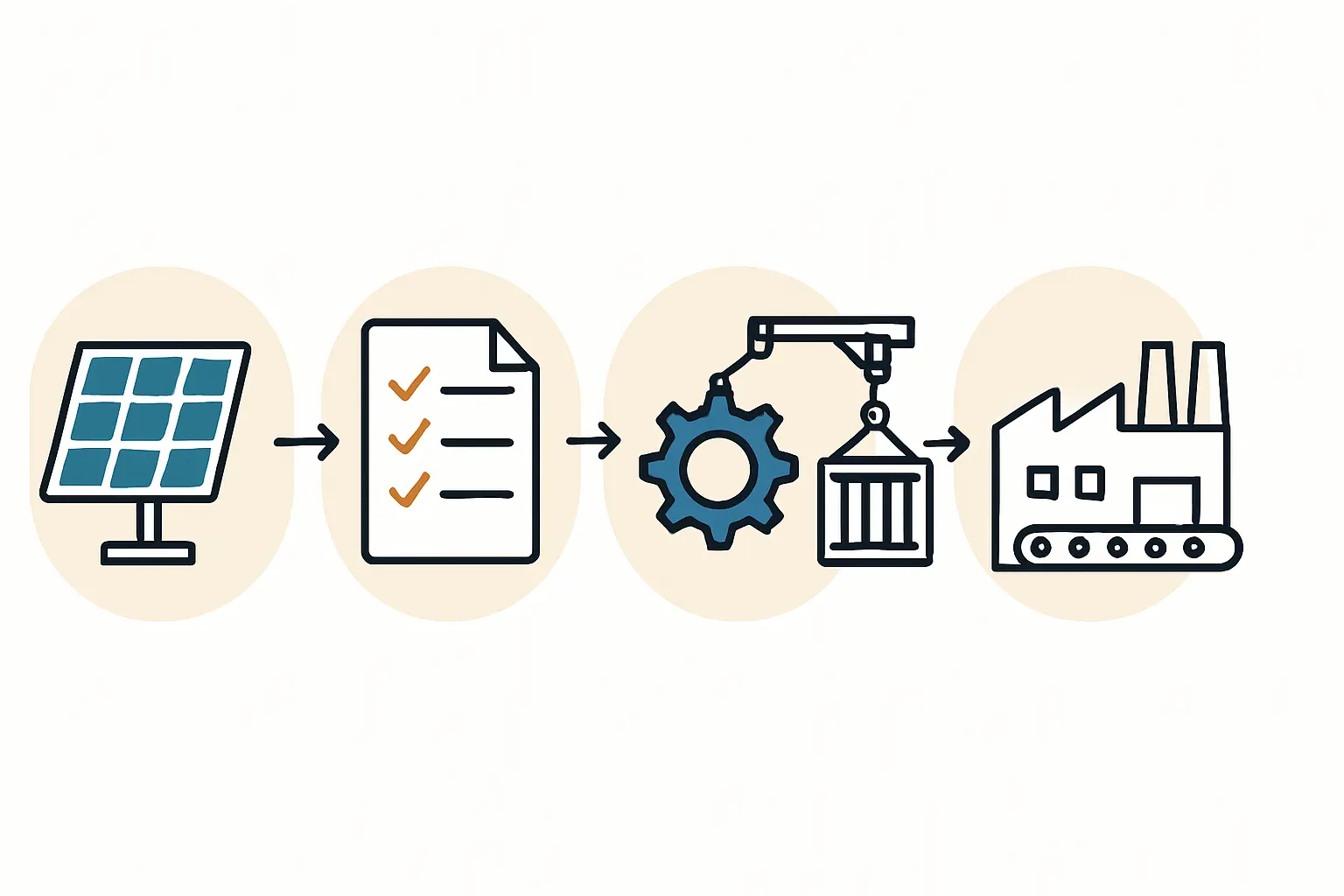
Navigating Tariffs and Taxes: The East African Community (EAC) Framework
Kenya is a member of the East African Community (EAC), which operates a Common External Tariff (CET) for goods imported from outside the bloc. This tariff structure is essential for financial planning, as it directly impacts the landed cost of your raw materials.
For aspiring solar manufacturers, the CET presents both advantages and significant costs. Based on the 2022 EAC CET, the duty rates for key solar components are structured as follows:
Key Import Duty Rates
-
Solar Cells (HS Code 8541.42.00): 0% Duty. This is a significant advantage, as the EAC recognizes the importance of renewable energy and incentivizes local assembly of solar modules by removing duty on the most expensive component.
-
EVA, Backsheets, and Junction Boxes: These components typically fall under classifications that attract a 10% import duty.
-
Production Machinery: Equipment imported for the explicit purpose of manufacturing often qualifies for duty remission schemes, potentially reducing the rate to 0%. However, this requires a specific application and approval process through the relevant government bodies.
Additional Taxes and Levies
Beyond the CET, importers must account for several other mandatory charges calculated on the CIF (Cost, Insurance, and Freight) value of the goods plus the import duty:
-
Value Added Tax (VAT): A standard rate of 16% is applied.
-
Railway Development Levy (RDL): 2%
-
Import Declaration Fee (IDF): 3.5%
Credibility Statement: Based on experience from J.v.G. turnkey projects, new investors often focus on the 0% duty for solar cells but overlook the cumulative impact of the 10% duty on other components plus the 21.5% in additional taxes and levies. This oversight can lead to a significant budget variance if not factored into the initial business plan.

The Port of Mombasa: Customs and Clearance Procedures
All sea freight arrives at the Port of Mombasa, the primary gateway for trade into Kenya and much of East Africa. A smooth clearance process here is vital to maintaining production timelines. The process is managed by the Kenya Revenue Authority (KRA) and facilitated through the Kentrade Single Window System.
The Typical Clearance Workflow
-
Pre-Arrival Declaration: Your appointed clearing agent must submit an import declaration through the customs system before the vessel arrives. This requires the bill of lading, commercial invoice, packing list, and certificate of origin.
-
Document Verification: KRA officials verify the submitted documents for accuracy, paying close attention to the Harmonized System (HS) codes, valuation, and description of goods.
-
Duty and Tax Payment: Once the declaration is passed, an assessment for the required duties and taxes is generated. This amount must be paid before the cargo can be processed further.
-
Physical Inspection or Scanning: Customs may subject the container to a physical inspection or non-intrusive scanning to verify that the contents match the declaration. This is a common step, especially for first-time importers.
-
Release and Gate Pass: Upon successful verification and payment, a release order is issued, allowing the container to be loaded onto a truck for inland transport to your factory.
Common Bottlenecks and How to Prepare for Them
-
HS Code Misclassification: Using an incorrect HS code is a frequent source of delays and penalties. Working with an experienced clearing agent who understands the specific classifications for solar components is crucial.
-
Valuation Disputes: If KRA officials believe the declared value of the goods is lower than the market rate, they may issue an uplift, leading to higher taxes and delays while the dispute is resolved. Clear, auditable commercial invoices are essential.
-
Inland Logistics: Transport from Mombasa to manufacturing hubs like Nairobi, Naivasha, or Eldoret requires reliable logistics partners. Poor road conditions or security risks on certain routes must be factored into the overall timeline and cost—a critical consideration, as regional infrastructure can be less predictable than in Europe or North America.
The entire solar panel manufacturing process relies on a steady, predictable flow of these inputs. A delay of one week at the port can halt an assembly line designed to produce thousands of modules per month.
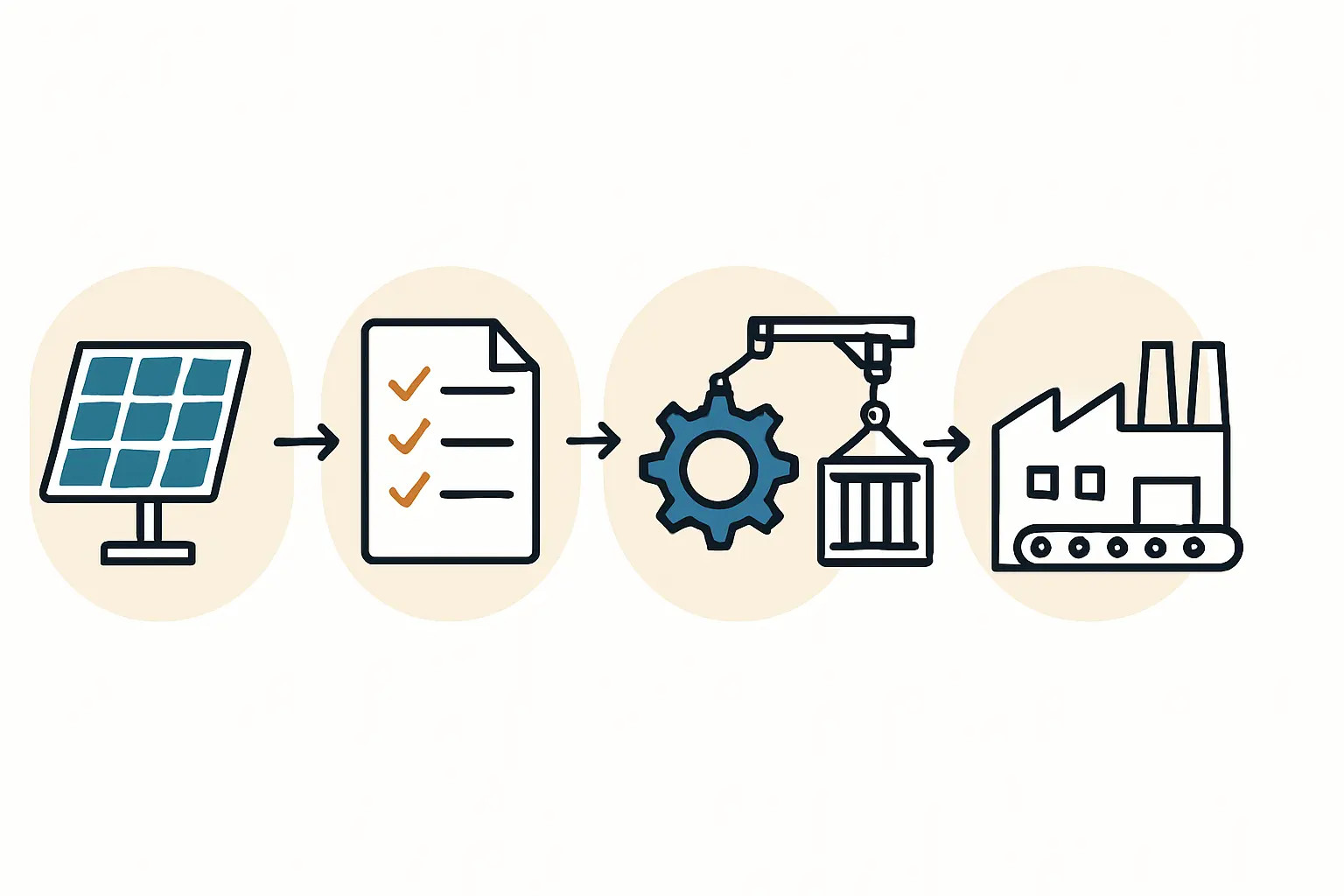
Frequently Asked Questions (FAQ)
What is an HS code and why is it so important?
The Harmonized System (HS) code is an internationally standardized system of names and numbers used to classify traded products. Customs authorities use it to apply the correct tariffs and taxes. An error in the HS code can lead to paying the wrong duty rate (often higher), fines, and significant clearance delays.
Are there any tax exemptions available for a new solar factory in Kenya?
Yes, Kenya offers investment incentives, including exemptions on import duties for capital equipment and machinery under certain conditions, such as establishing a factory within a Special Economic Zone (SEZ) or proving the equipment is for manufacturing purposes. These are not automatic and require a formal application process.
How long does customs clearance typically take at the Port of Mombasa?
With all documents in order and a competent clearing agent, the process can take between 5 to 10 working days. However, if discrepancies lead to physical verification or valuation queries, it can extend to three weeks or more.
Is it possible to source any of these raw materials locally in Kenya or the EAC?
Currently, the production of high-quality, certified solar cells, EVA, and backsheets is concentrated in Asia and Europe. While local sourcing of aluminum frames and glass is becoming more feasible, the core electronic components will need to be imported for the foreseeable future.
Conclusion: Building a Resilient Import Strategy
Successfully launching a solar module manufacturing plant in Kenya requires more than just technical production knowledge. It demands a deep understanding of international logistics and local customs regulations. The tariff structure, while favorable for solar cells, adds significant costs on other essential components that require accurate budgeting.
By anticipating the procedural requirements at the Port of Mombasa, partnering with experienced logistics and customs brokerage professionals, and meticulously preparing all documentation, entrepreneurs can mitigate risks and build a robust supply chain. This foundational work is not merely an administrative task; it is a strategic imperative for ensuring the long-term viability and profitability of the manufacturing venture.

